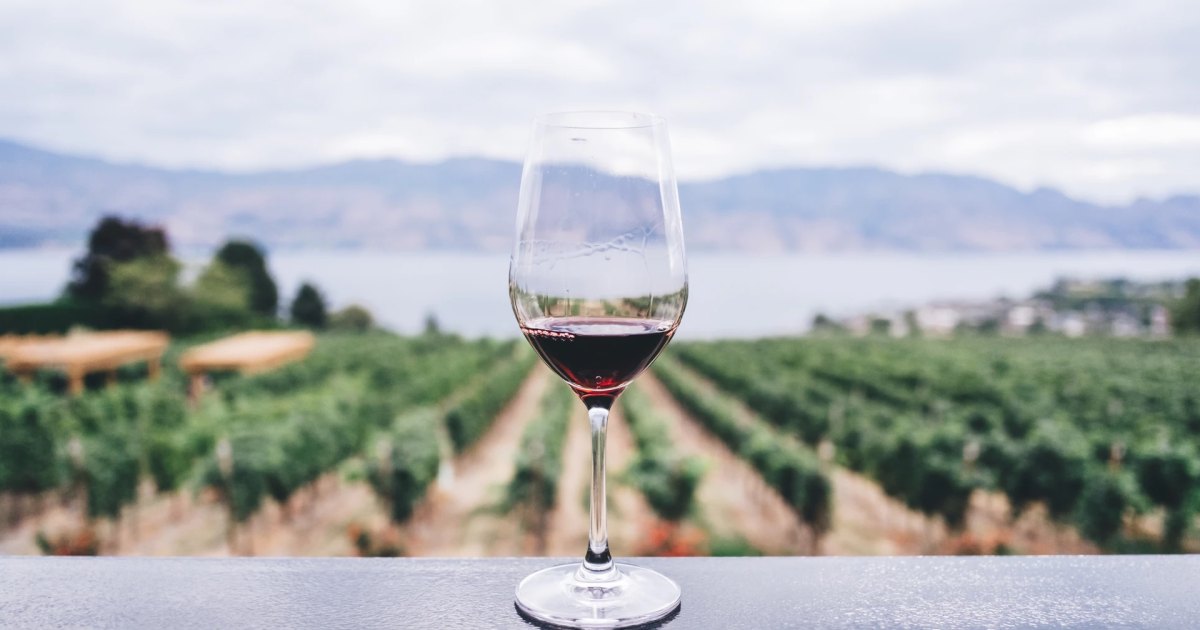No products in the cart.
Fitness Tips
5 Wine Country Trips Better Than Napa
Napa Valley may be synonymous with wine country trips. The well-established region with 400 some wineries consistently churns out award-winning labels. But there are plenty more wine trip destinations that shrug off the pretension, make damn good vino, and also offer outdoor recreation to break up your wine tastings.
From the remarkable pinot noirs in Oregon’s Willamette Valley to a wine region in Western Colorado that’s also a draw for mountain bikers to Mexico’s ancient but largely undiscovered wine region on the Baja peninsula, these authentic spots are ripe for exploration.
Here are five alternatives to Napa for your next wine country escape.
5 Wine Country Trips Better Than Napa

1. Healdsburg, California
At the convergence of three distinct Sonoma County wine regions (Dry Creek Valley, Russian River, and Alexander Valley), Healdsburg’s fertile soils produce a diverse slate of wines including crisp chardonnays, hearty old vine zinfandels, and supple pinot noirs. This humble city with agricultural roots has an idyllic downtown square and award-winning restaurants like SingleThread, a three Michelin Star farm-driven restaurant with an outdoor forest-themed dining room. As a whole, the region eschews stuffy indoor tastings and takes the wine experience outdoors. At Jordan Vineyard and Winery, you can take a four-mile hike through the sustainably farmed vineyards and get a panoramic view of the area’s wine regions from the hilltop. The winery added a new pollinator sanctuary to create a habitat for the endangered Western monarch butterfly. After, enjoy a charcuterie picnic and French-insired wines on the terrace. Add DaVero Farms & Winery to the itinerary, too. Owner Andrew Hock says his goal with the biodynamically made wines is to “tear down the pretentious walls of wine and make it accessible.” Here, pigs till the vineyard soil, willow clippings shade a tasting table, and the farm donates 10,000 pounds of veggies to food banks every year.

2. Palisade, Colorado
Colorado is better known for its weed and craft beer than its vino. But Palisade, a patch of high desert on Colorado’s Western slope, has some stellar wines—plus you can spike your getaway with plenty of adventure. (Opening in summer 2021, the much-anticipated $3.2 million Palisade Plunge is set to be among the longest singletrack downhill mountain bike trails). During Prohibition, Colorado’s vineyards were uprooted and replaced with orchards. Classic wine-grape varieties have since been reintroduced, producing merlot, cabernet sauvignon, and sauv blanc in this area where days are sunny and nights are cool. Book a stay at Spoke & Vine, a hip boutique motel that will pour you a glass of local wine at check-in and loan you a bike so you can explore the area’s two dozen wineries. While in town, sip estate-grown Bordeaux-style wines at Colterris and enjoy jammy, earthy malbecs at BookCliff Vineyards run by engineers-turned-winemakers.

3. Willamette Valley, Oregon
Willamette Valley’s kingpin varietal is pinot noir, which is quite finicky and requires a just-right climate like the one afforded in Oregon’s wine country. But the long and patient growing season in Willamette Valley also yields some phenomenal pinot gris, gamay noirs, sparkling wines, and more. White cuvées are also a trend to try here, with labels like Day Wines, Maysara and Walter Scott creating some of these compelling white wine blends (think chardonnay with a touch of aligoté, or an even mix of marsanne and roussanne.) Willamette Valley wine travelers have more than 500 wineries to choose from in the region. One of the best ways to explore the wineries (and breweries) is on two wheels along the 134-mile Willamette Valley Scenic bikeway.

4. Valle de Guadalupe, Mexico
Known as Mexico’s Napa Valley, the Valle de Guadalupe is the oldest wine-growing region in North America, with grapes cultivated on the Baja Peninsula for the past 500 years. After conquering the Aztecs in 1521, Herman Cortes requested grapevines from Spain to plant in Mexico. With a hot and dry climate, cabernet sauvignon, merlot, malbec, and tempranillo grow as well as the red wine Mission grape brought from Spain that’s known as Listan Prieto. Despite having an ancient wine history, Mexico is just now starting to market its juice. To put it another way? Get there for a wine tasting tour before it’s discovered on a global scale. For a good introduction to the region, get familiar with Bruma Winery run by winemaker Lourdes “Lulu” Martinez Ojeda, an Ensenada native who studied in Bordeaux. In addition to a winery, Bruma has a restaurant and eight suites in a desert bed and breakfast, plus a swimmable pond.

5. Paso Robles, California
Along the central coast, San Luis Obispo County exudes California cool with its 80 miles of coastline and surfable beaches. One SloCal city, Paso Robles, is steadily gaining recognition for its buzzy-but-laidback wine scene. More than 40 wine grape varieties are grown in Paso, ranging from cabernet sauvignon, syrah, grenache, and zinfandel for reds, and grenache blanc, roussanne, sauvignon blanc, and chardonnay for white wines. In all, Paso Robles has 200 wineries and vineyards. You can sip wine in cool underground caves at Eberle Winery, try wine in an Old West-style saloon at Tobin James, and discover Paso’s rich Rhône wine history at Tablas Creek. Winemakers are also fermenting apples, giving way to a hard cider movement as well. Sample some at Tin City Cider.
For access to exclusive gear videos, celebrity interviews, and more, subscribe on YouTube!
Source link

